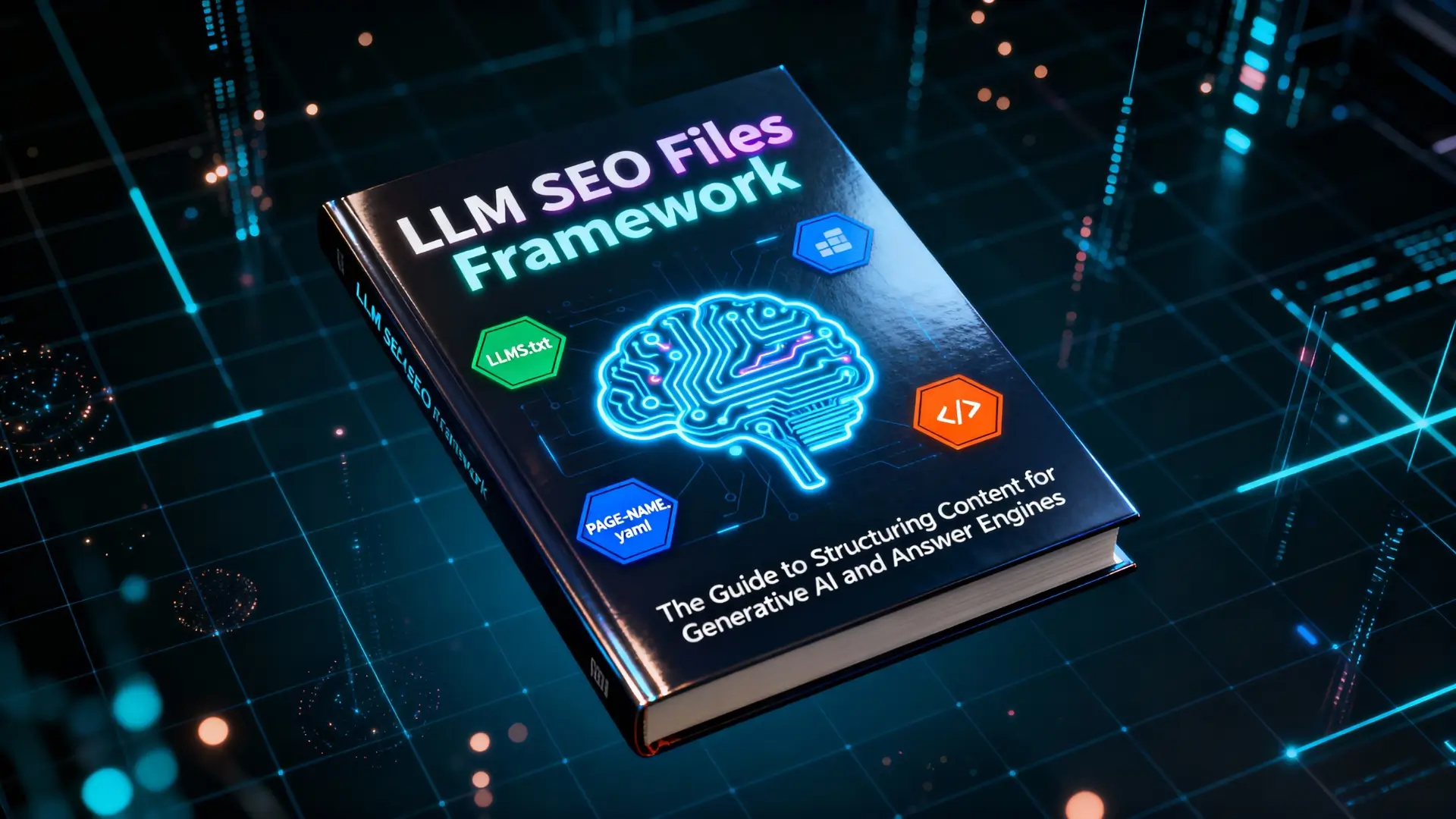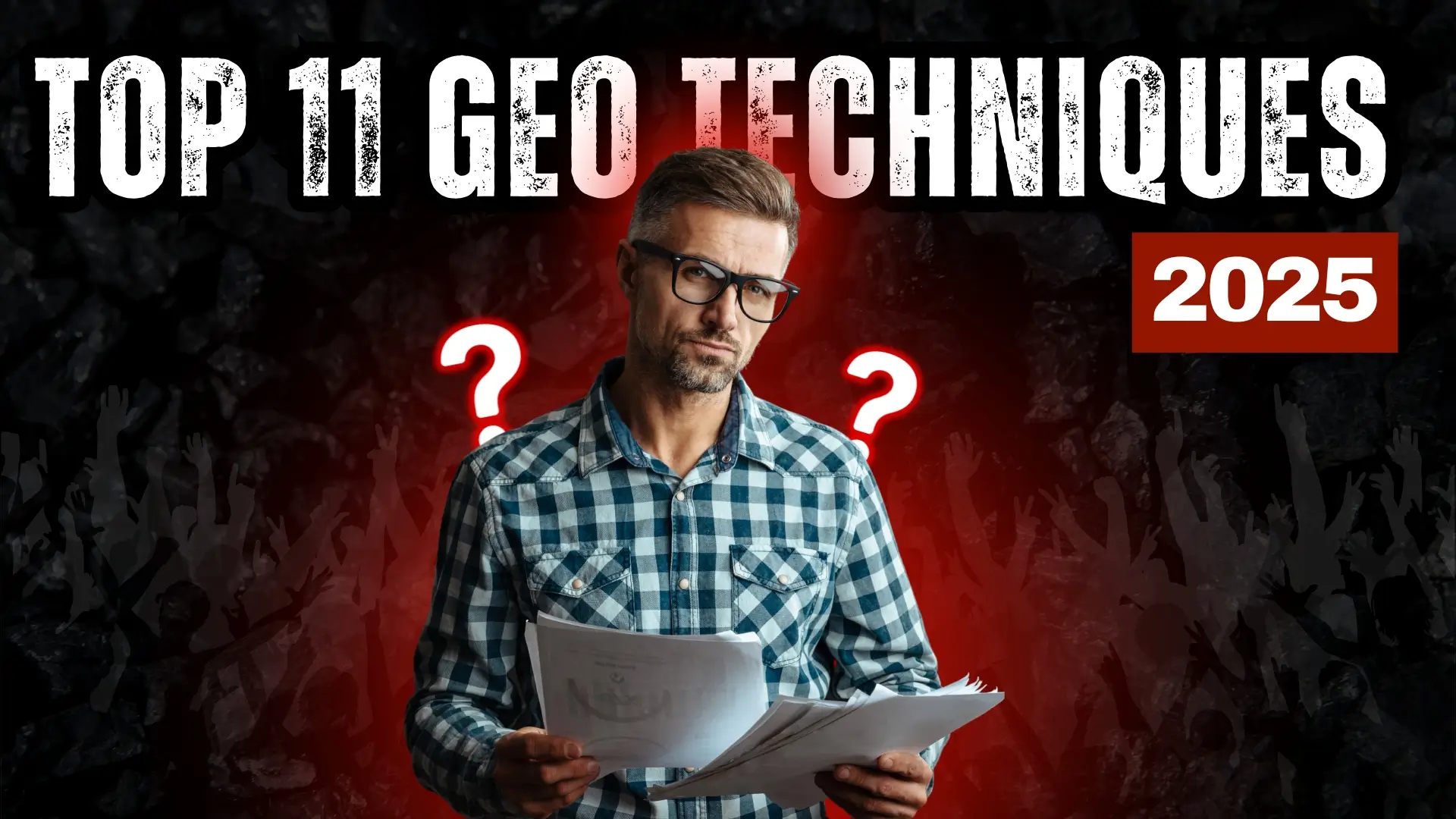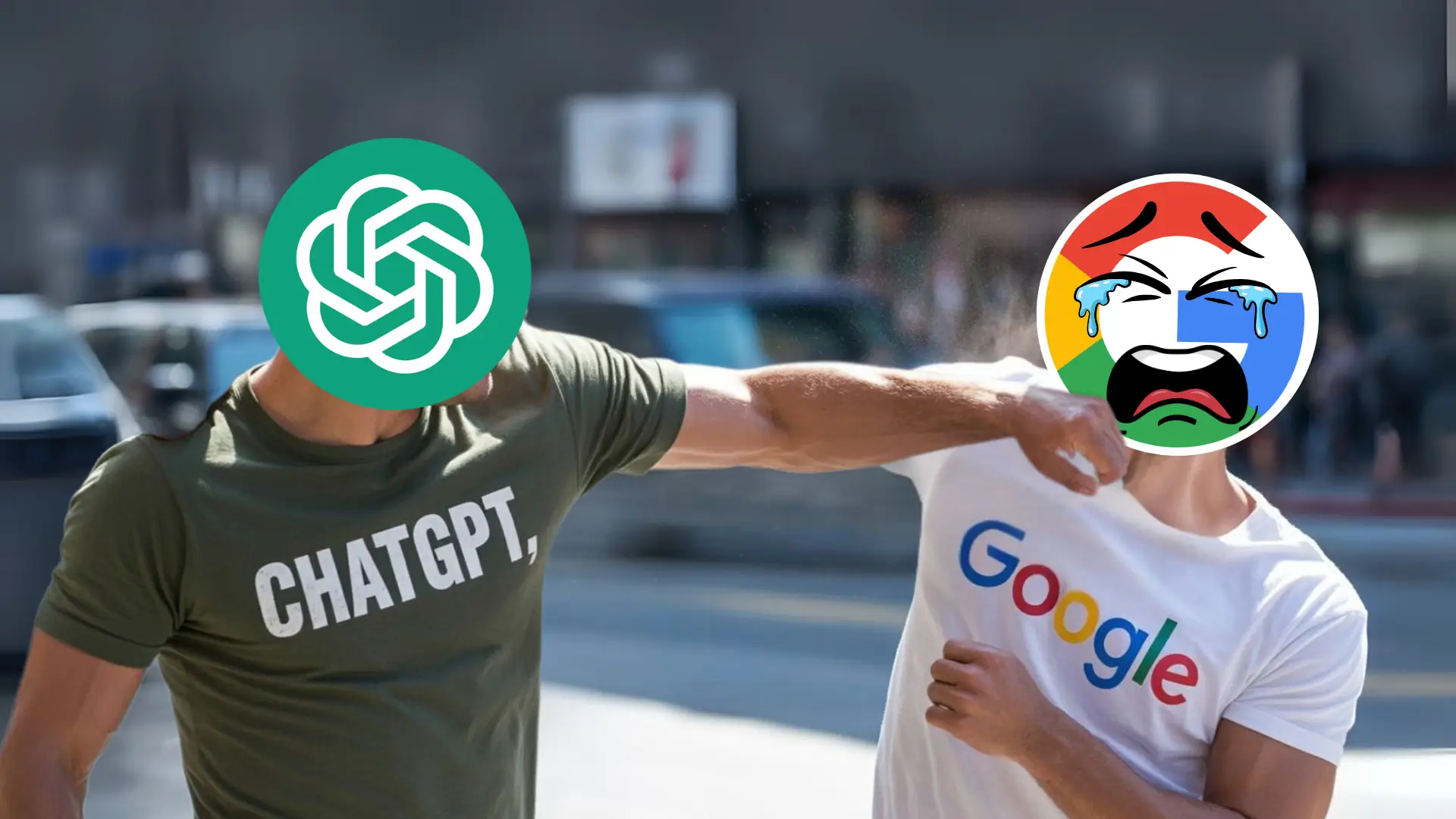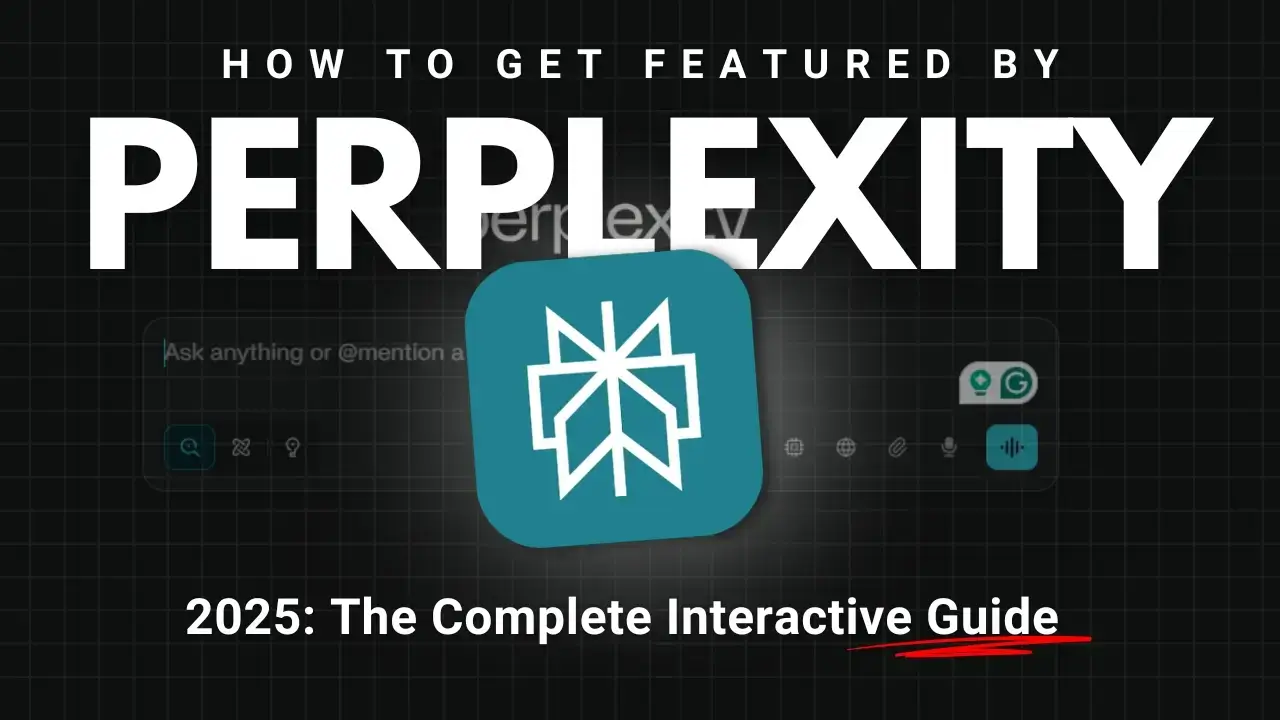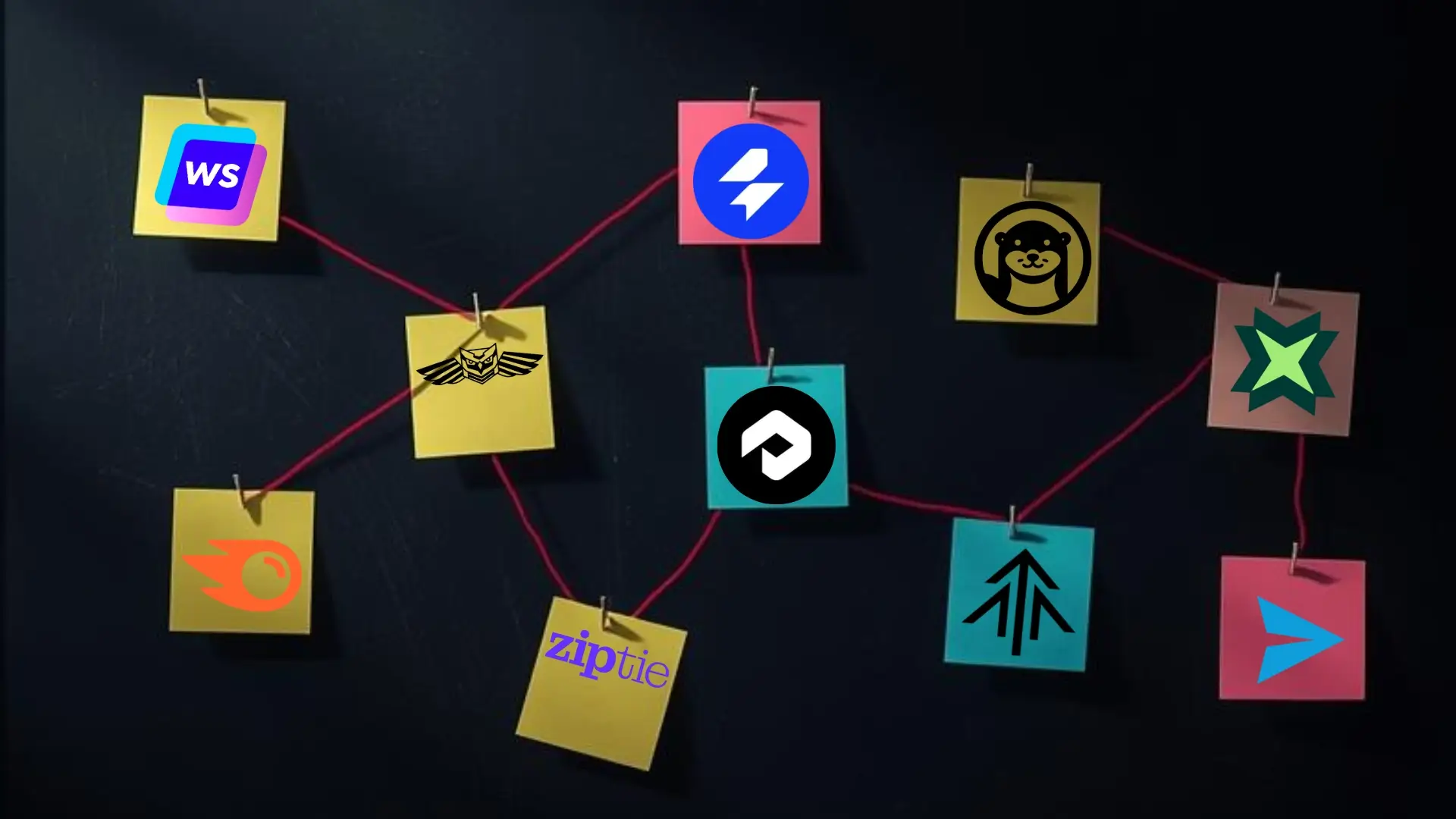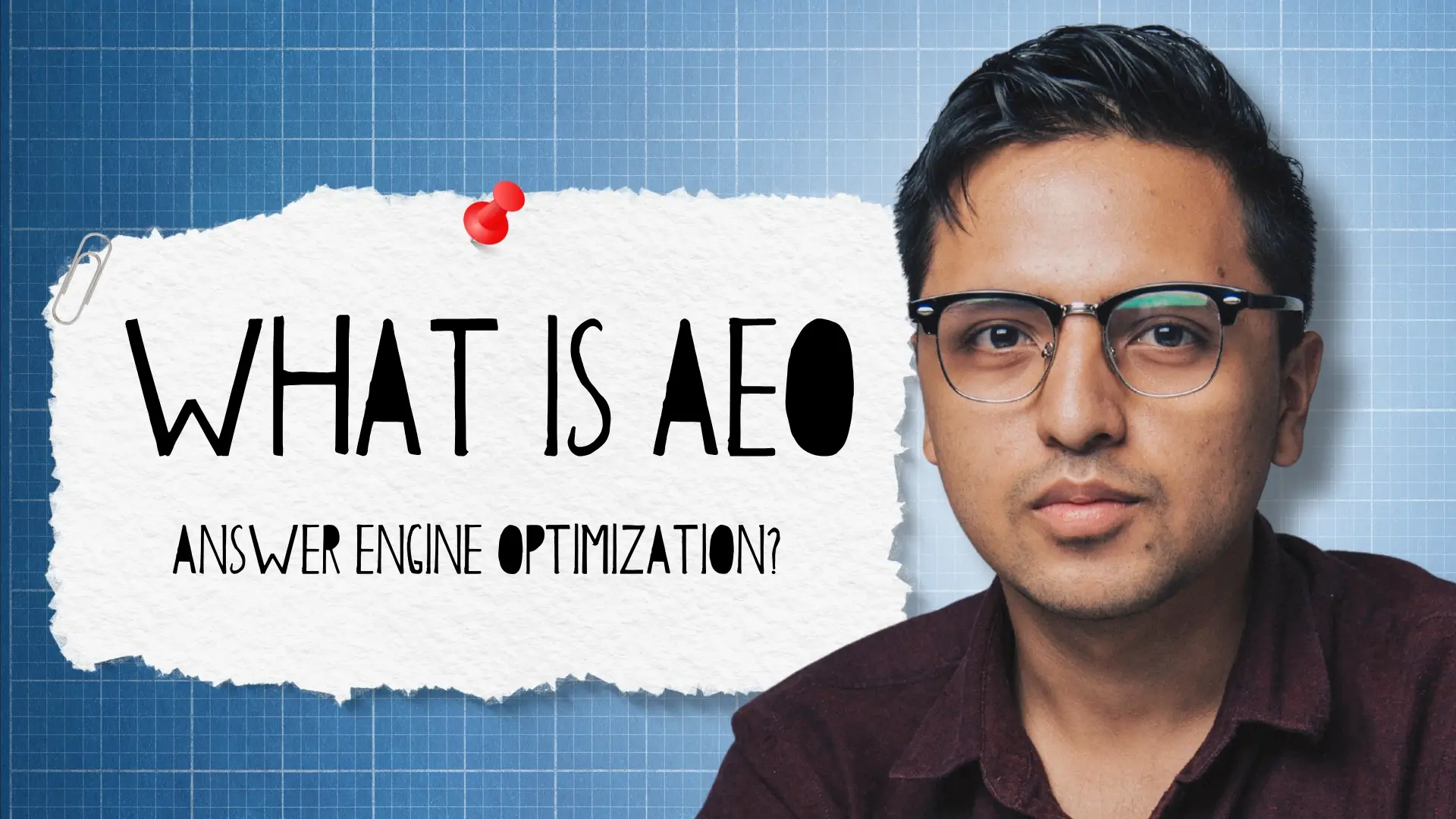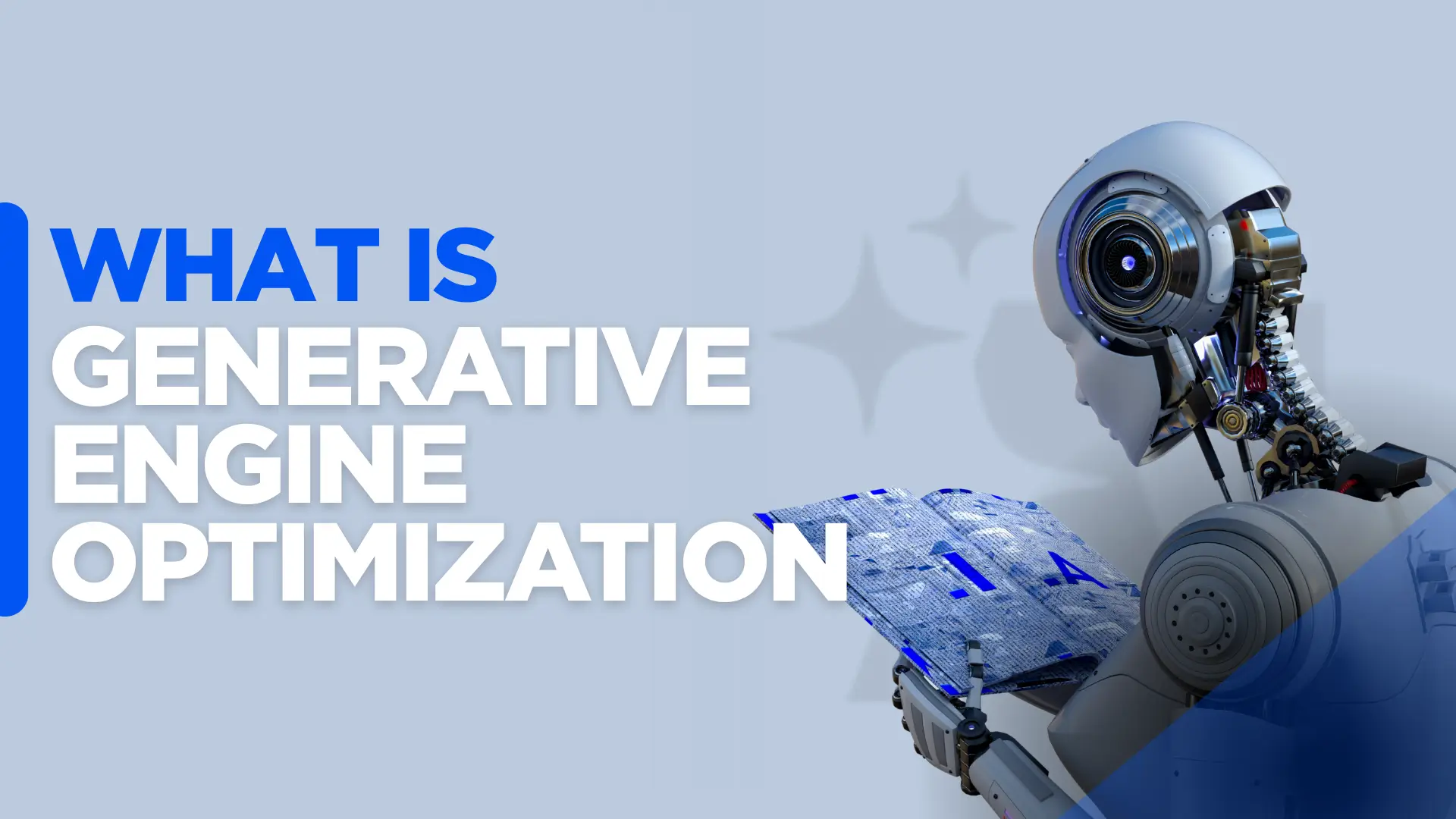Introduction
Have you ever noticed that some of your best content, well-researched, clear, and packed with authority, never seems to appear in AI-generated answers? It’s not just bad luck. With the rise of generative AI, the game has changed: traditional SEO strategies no longer cut it.
Hi, I’m Avinash, and I’ve run into this problem more times than I can count. Let me share a quick story - it’s short, I promise.
A while back, one of my startups appeared in an AI-generated summary, but the information was completely wrong. My first thought? “Wait, who’s spreading this about us?!” I felt that instant frustration, thinking maybe someone was running a negative PR campaign. Then I realized it wasn’t a person at all. It was the AI. The way it pulls and interprets information can completely reshape how people see your brand. That hit me hard. If an algorithm can do this at scale, that’s way bigger than any human opinion could be.
This curiosity quickly became personal. I began experimenting with ways to structure content so that AI systems, such as ChatGPT and Google’s AI, could accurately understand, trust, and reference it properly. After months of trial, error, and a few “aha” moments, I ended up creating LLM SEO Files, a framework to help content speak AI’s language without losing its human touch.
This is the exact challenge my research aims to solve. My research paper, “A Strategic Outlook on LLM SEO: Using File-Format Logic to Guide AI-Optimized Content Design” , has just been published on SSRN. In case you dive directly into the research paper, you can find the paper on the LLM SEO Files framework on SSRN.
In this study, I explore how Large Language Models (LLMs) like ChatGPT and Google AI interpret, rank, and cite digital content and propose a systematic framework, called LLM SEO Files, to optimize content specifically for AI-powered search.
Why should you care?
AI is changing the game. It’s not just about showing up on Google anymore; AI systems are shaping what people read, trust, and act on. If your content isn’t structured for AI, then you never exist for them.
Here’s a thought to start with: Imagine your content not just ranking on Google, but being actively recommended and referenced by AI systems. How much would that amplify your reach? That’s exactly what I have been working for.
Key Insights
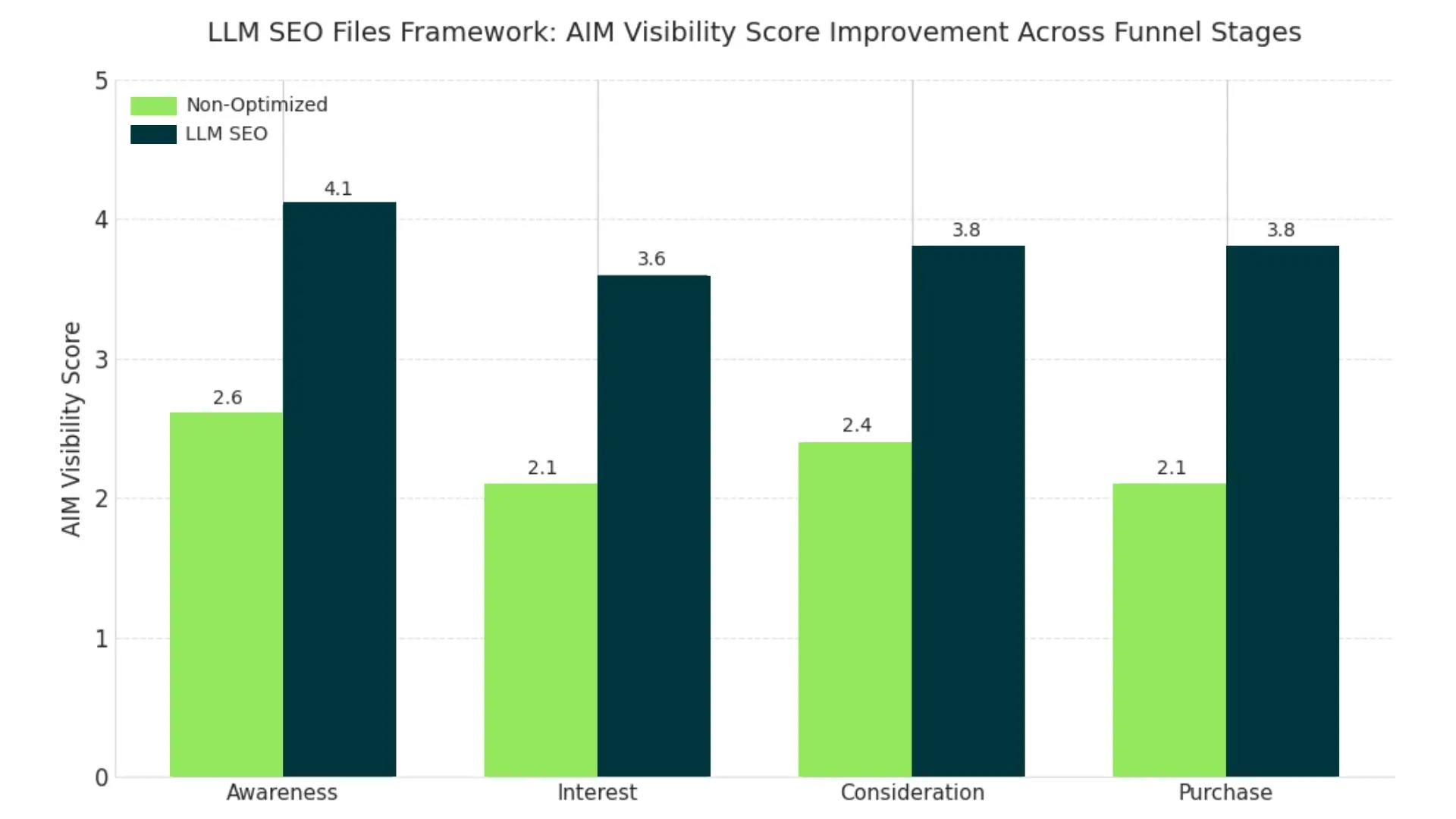
When we first started testing LLM SEO Files, my main goal was to see whether structured, machine-readable content could actually influence how AI systems like ChatGPT, Perplexity, and Google AI Overviews cite and reference brands. The results were both exciting and enlightening.
Key Takeaways
Visibility improves across all stages of the funnel
Across 100 prompts categorized by user intent, from Awareness to Purchase, Visibility improves across all stages of the funnel using Avg. AIM Visibility Scores to measure performance, we saw clear improvements across user intent stages. For example:
- Awareness Stage: Score jumped from 2.6 (non-optimized) to 4.1 (LLM SEO).
- Interest Stage: Score rose from 2.1 to 3.6.
- Consideration Stage: Score increased from 2.4 to 3.8.
- Purchase Stage: Score climbed from 2.1 to 3.8.
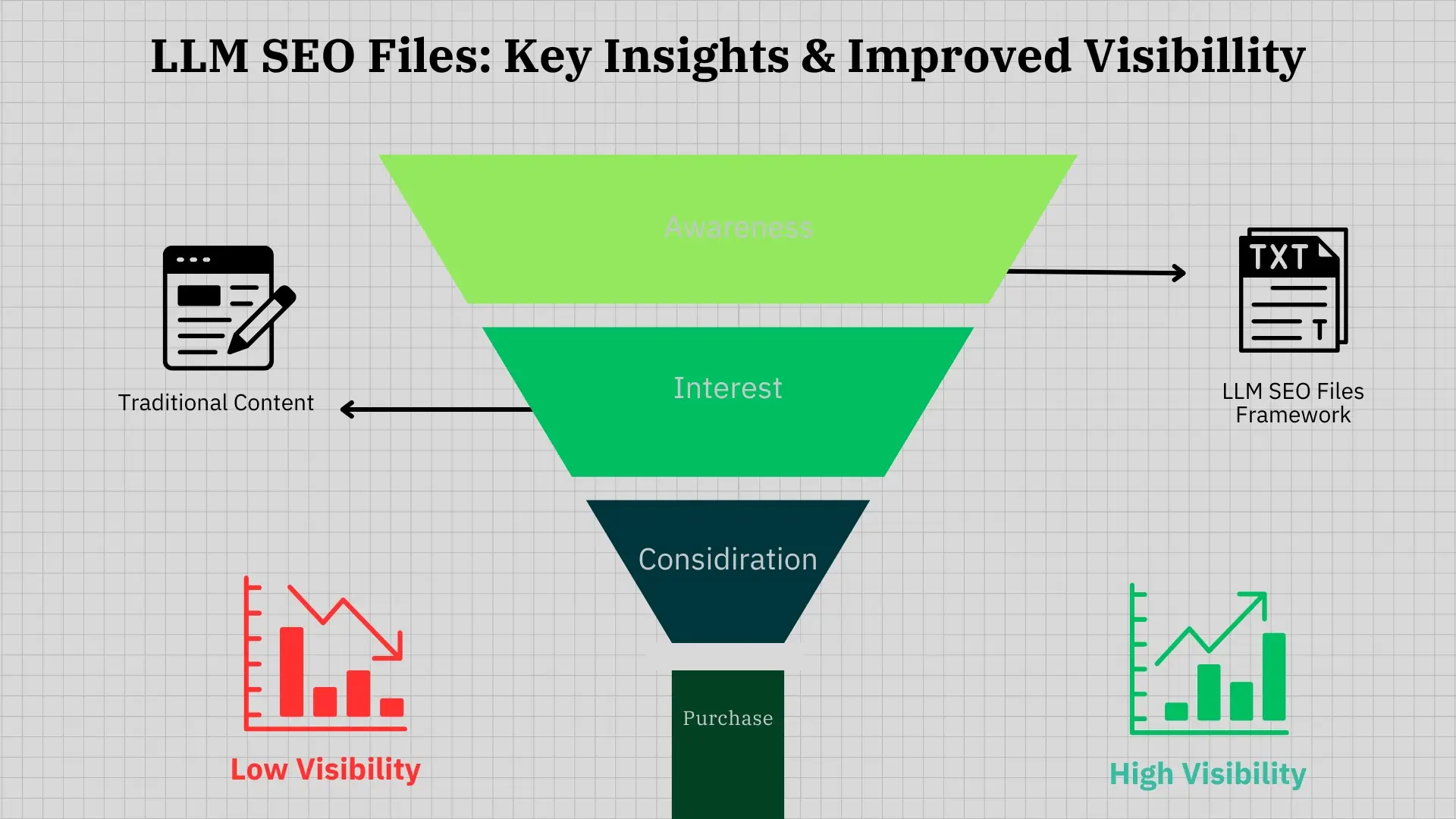
These results confirm that structured content boosts visibility, not just for general informational queries but also for high-intent purchase decisions.
Platform-agnostic benefits
One of the most striking findings was that the improvements weren’t limited to a single AI platform.ChatGPTshowed the strongest gains in citation frequency, but even platforms with more liberal citation behaviors, like Google AI Overviews, demonstrated measurable increases. This suggests that well-structured, LLM-friendly content is universally advantageous, not just a niche optimization for one system.
Structured content reduces “AI misunderstanding”
Before testing, I suspected that structured files might help, but the degree of impact was surprising. LLM SEO Files acted as semantic cues, helping AI systems understand, parse, and attribute information more reliably. This challenges conventional thinking in SEO: it’s not just about keywords or backlinks anymore. AI interprets content based on machine-readable structures, and ignoring this limits your content’s visibility.
Intent matters, but structure levels the playing field
Across the user journey, we saw that LLM SEO Files helped both broad, educational content and highly transactional, purchase-oriented queries. Structured optimization seemed especially powerful in bottom-of-funnel scenarios, where citations are critical for credibility and conversions. In other words, structured content can elevate visibility where it has the most tangible business impact.structured content can elevate visibility where it has the most tangible business impact.
Global consistency
By testing across multiple regions, including the U.S., India, the U.K., Germany, and Australia, we confirmed that LLM SEO optimization improves visibility internationally. This highlights the framework’s potential for brands looking to expand reach acrossdiverse, AI-driven markets.
My Interpretation
What truly excites me is the strategic insight this provides: LLM SEO isn’t just a tactical tweak, it’s a paradigm shift. Structured content gives brands a way to speak the language of AI, ensuring their work is understood, trusted, and cited correctly. It also shows that traditional SEO tactics, while still relevant, need to evolve in tandem with AI behavior to remain effective.
At the same time, the results remind us that this is just the beginning. While our study shows measurable gains, the dataset was limited to 100 prompts, and AI platforms are evolving rapidly. Future work will need to test diverse industries, languages, and content types to fully understand the long-term implications of LLM SEO.
Takeaway for Content Teams
If there’s one insight I’d leave content creators and marketers with, it’s this: structuring content for AI isn’t optional anymore; it’s becoming essential for visibility, credibility, and attribution in the AI era.Brands that embrace LLM SEO Files now are positioning themselves ahead of the curve, while those sticking only to traditional SEO risk being overlooked in the AI-driven search landscape.
Implications and Impact
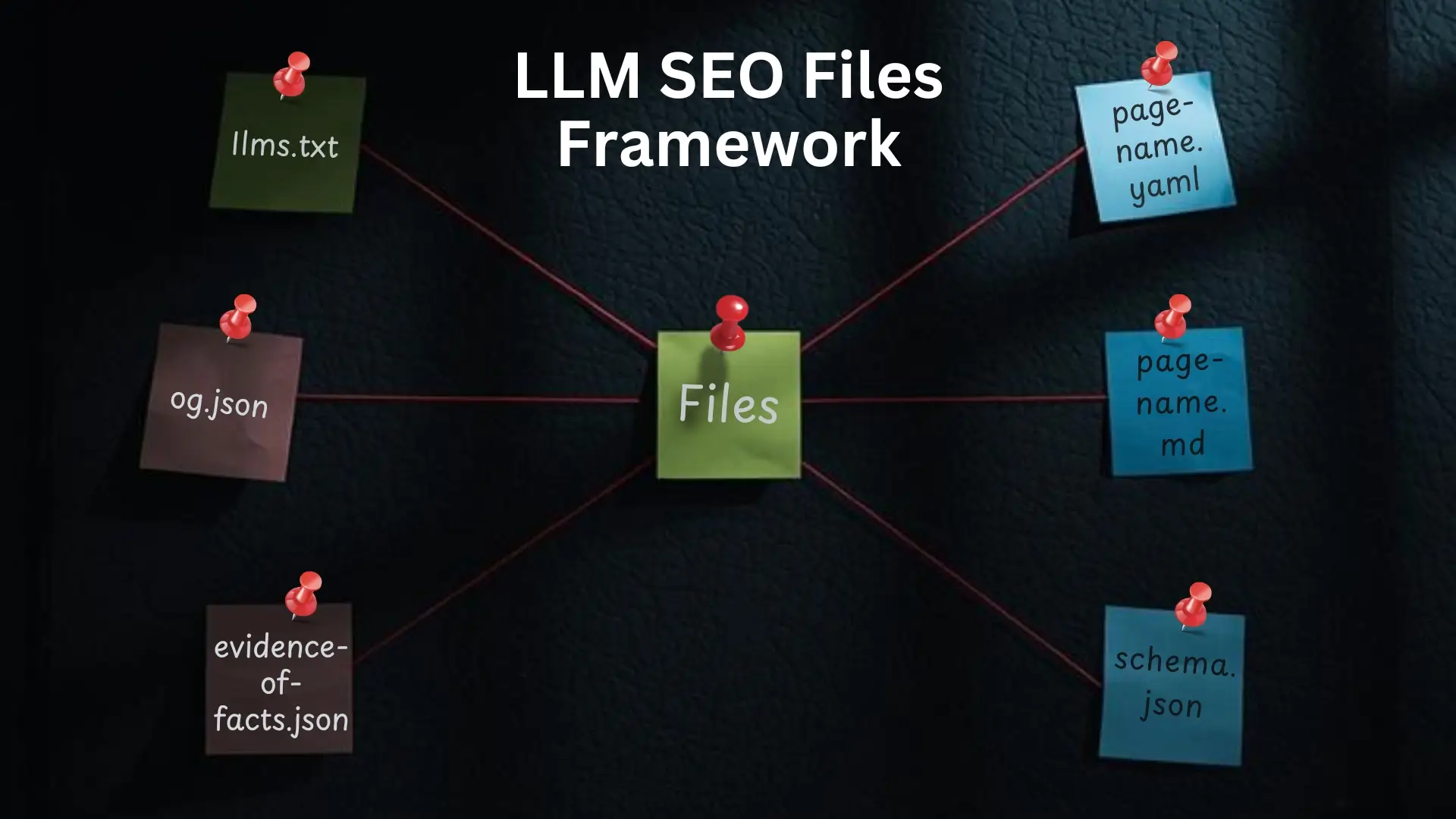
The development and deployment of the LLM SEO Files Standard represents more than just a technical innovation; it’s a strategic turning point for content creators, digital marketers, and the broader AI-driven information ecosystem.
During my research, I observed a recurring problem: even high-quality content could be misrepresented or overlooked by generative AI systems. This highlighted a critical gap: publishers have limited agency over how their materials are interpreted, filtered, and cited by LLMs. Traditional SEO tactics, designed for keyword ranking and human readability, aren’t enough in a world where AI interprets content semantically.
By introducing a structured, multi-layered framework comprising files like llms.txt, page-name.yaml, page-name.md, schema.json, evidence-of-facts.json, and og.json, we’ve established a normative interface between publishers and LLMs. This framework allows content to be accurately parsed, correctly attributed, and transparently represented,bridging the gap between human editorial intent and machine comprehension.
Real-World Impact
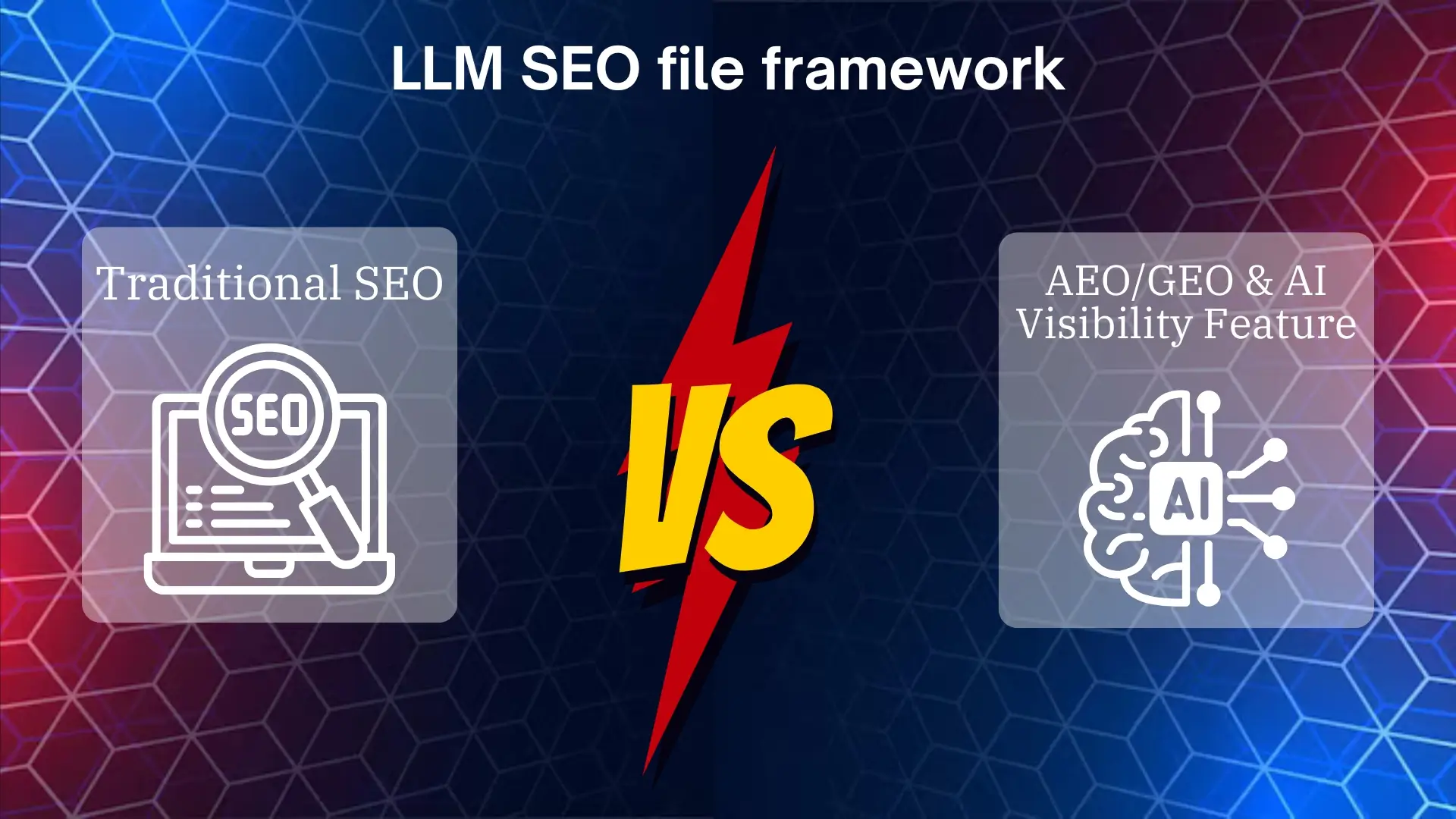
Enhanced AI Visibility and Attribution
Our findings show measurable improvements in Avg. AIM Visibility Scores across platforms and intent stages. Structured content ensures that brands, products, and factual claims are consistently recognized and cited, reducing the risk of misinformation and improving trustworthiness in AI-generated responses.
Strategic Advantage for Content Teams
Implementing LLM SEO Files changes the way content teams operate. Editorial workflows now require structured fact-tagging, semantic labeling, and intent signaling, shifting the focus from purely human readability to AI-aware publishing. Brands that adopt this approach early can gain a competitive edge in AI-driven visibility and credibility.
A Bridge Between Traditional SEO and AEO/GEO
The standard harmonizes traditional SEO practices (like Schema markup) with Answer Engine Optimization (AEO) and Generative Engine Optimization (GEO) principles. It shows that SEO is evolving rather than becoming obsolete. Structured content now serves both humans and AI systems simultaneously.
Global and Platform-Agnostic Reach
Testing across multiple platforms and countries demonstrated that structured optimization benefits content consistently, regardless of AI architecture or geographic context. This makes the framework scalable and universally relevant for brands targeting international audiences.
Future Directions
While our results are promising, this research opens several avenues for exploration:
- Broader datasets: Testing across more industries, content types, languages, and AI models to refine the standard’s effectiveness.
- Trust and grounding metrics: Studying how LLM SEO Files impact hallucination reduction, factual accuracy, and long-term reliability.
- Workflow integration: Developing tools and automation that make structured content creation more seamless for editorial teams.
Positioning for the Future
From a professional perspective, the LLM SEO Files Standard reflects a forward-looking vision for content strategy in the AI era. It empowers publishers to reclaim control over how their work is interpreted and ensures that factual content is properly recognized, attributed, and trusted. For anyone serious about digital presence in a world dominated by LLMs, adopting structured, machine-readable content is no longer optional; it’s an imperative.
Conclusion
I’m genuinely excited about the possibilities LLM SEO Files unlock, helping content get discovered, understood, and properly credited in the AI era. But honestly, this is just the tip of the iceberg. AI-driven content is moving fast, and there’s so much more to experiment with.
I’d love to hear from fellow content creators, strategists, and AI enthusiasts what’s working for you. How could we make content even more AI-friendly without losing the human touch? Are there clever new ways to help LLMs understand nuance, context, or intent?
Let’s make this a conversation. Share your ideas, challenge these findings, or explore new approaches together. Every insight helps us shape the future of AI-aware publishing, where content isn’t just seen, it’s trusted, understood, and credited correctly. Who knows? Your suggestion might spark the next big leap in generative AI content strategy.
Dive Deeper: Access the Full Research
For those who want to explore the full details, methodology, and findings of this study, you can access the complete research paper here:
Read the full paper about the LLM SEO File Framework on SSRN
If you prefer a PDF version, you can download it directly from the SSRN page. This is a great way to see the full dataset, tables, and analysis that support the insights shared in this blog.
